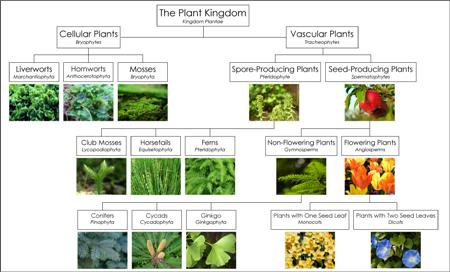
The Linnaean System in practice. Image from Montessori for everyone - The Optimization of Classification; © 2005-2011 Montessori for Everyone.
| The Linnaean System | ||
| Systematics | Linnaean Home |
| The Great Chain of Being | Animal, Vegetable, and Mineral | ||
| The Great Chain of Being | Systematics | Taxonomy | The Tree of Life |
 The Linnaean System in practice. Image from Montessori for everyone - The Optimization of Classification; © 2005-2011 Montessori for Everyone. |
Ever wondered where those fancy names come from? Tyrannosaurus rex, or Triceratops? (actually Triceratops prorsus and the aptly named Triceratops horridus; every scientific name is binomial, or made up of two parts). Well, there's actually a scientific body (or several) that ensure that every new species is properly named. Once named, the species can be officially referenced in scientific journals, as well as in popular books. This goes not just for prehistoric monsters but for every living thing. Man for example is Homo sapiens. (or more correctly, Homo sapiens Linnaeus, 1758)
The science of naming the living world is what is known as taxonomy. Taxonomy is the theoretical study of classification and the principles, procedures and rules thereof; the science of finding, describing and naming organisms, thus giving rise to taxa. Essentially, taxonomy deals with the ways in which we group living things together, in contrast to phylogeny which refers to evolutionary history.
Basically, taxonomy is like a sort of Dewey Decimal system, by which organisms can be named and categorised, rather like books in a library arranged according to subject. This way species can be identified, for example for environmental research, observing creatures in the wild, growing plants in a herbarium, identifying fossils in order to understand the past ages of life on Earth, or something as banal yet necessary or cataloging specimens in a museum drawer. This system of taxonomy (called Linnaean) was developed even before Darwin's theory of evolution, and even before the modern science of paleontology. MAK120229 120320
Taxonomy is a product of the modern age, specifically, the Age of Enlightenment. Classical and medieval thinkers used logical and philosphical categories, but these were based on the most general principles, and while perhaps useful for abstract philosophy, were not much use in understanding the natural world. In the worldview of the Middle Ages, based as it was on reliance on literalist religion and a fixed social and cosmic order, this didn't matter much, but with the progressive advance of knowledge during the Renaissance, the Age of Reason, and the Enlightenment, there developed an interest in the secular world for its own sake. Botanists especially were fascinated by exoteric new plants discovered during the voyages of exploration. It is not coincidental then that the father of modern biological classification was a botanist, Carl Linne, better known by his Latin name Linnaeus.
Linnaeus's simple yet brilliant idea was to distinguish nomenclature - the science of naming - from description. He therefore rejected the long-winded descriptive names of plants used by his predecessors and contemporaries, and replaced them with a simple two name system, a generic and a specific (think surname and given name, e.g. Smith, John). These where then grouped in hierarchies such as class, order, and so on. With only slight refinements, the Linnaean system is the scientific, biological classification system still used today. Linnaeus's classification of nature involved the three divisions of animal, vegetable, and mineral, although the great Swedish botanist's work on the mineral kingdom is now all but forgotten.
It was scientists and naturalists like Linnaeus in Sweden, and later the anatomist and naturalist Georges Cuvier in France, and Owen in England, and their collegues and co-workers, established in the 18th and early 19th century the science of what we now know as Taxonomy. Taxonomy is concerned with discovering, identifying, describing and naming organisms. For this to work it requires institutions to hold collections of these organisms, with relevant data, carefully curated: such institutes include Natural History Museums, Herbaria and Botanical Gardens. Richard Owen for example established the British Museum of Natural History in London, where his statue still resides. MAK120229
Linnaeus was not an evolutionist. Indeed, there was no such thing as a concept of evolution, in his day. Like Aristotle (and Christian creationists), he thought of species as immutable essences. This is why the Linnaean system is not a phylogeny, but a system of classifying the living world, developed at a time when species were considered the same today as when first created by an external God. Even with the 19th century discovery of evolution and the concept of a tree of life, Linnaean taxonomy remained based on similarity rather than evolutionary (phylogenetic) history. It was left to the great 20th century theorists of evolutionary biology and paleontology such as Mayr and Simpson to adaptable Linnaean methodology and include it in an overall evolutionary synthesis, the result being the methodology known as Evolutionary systematics. This became the standard paleontological worldview until the cladistic revolution of the 1980s. More recently it has been proposed that the venerable Linnaean system should be scrapped in favour of a new, phylogenetically based taxonomy; whether this actually comes to pass is anyone's guess. MAK130327
| The Great Chain of Being | Animal, Vegetable, and Mineral |
page last modified MAK130327